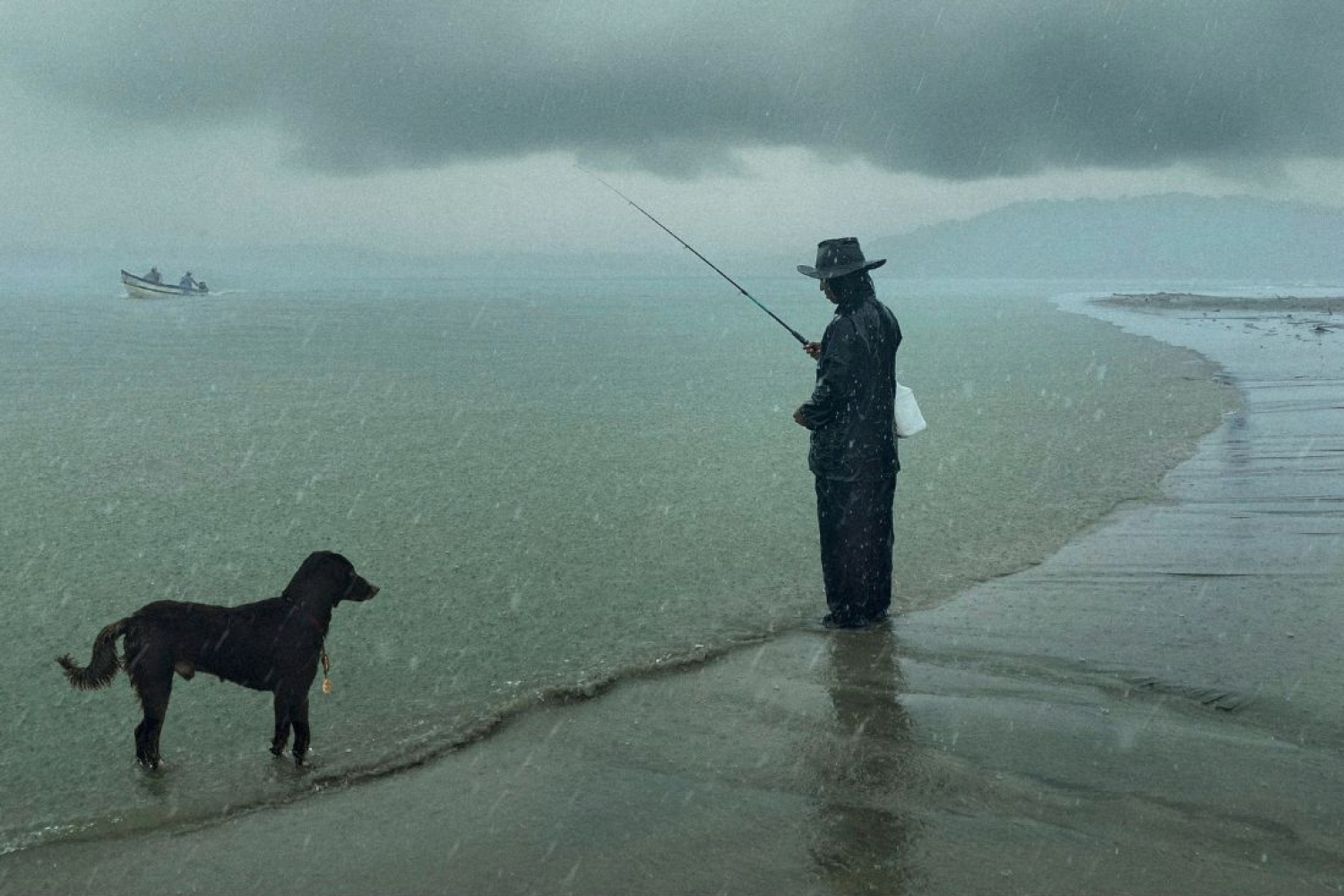

While everyone I knew was retreating behind shut doors to escape the Pandemic, I sought refuge under the monsoon skies of Goa. Except for stray dogs, the beaches were deserted, the clouds portentous, the sea a repository of stories that ebbed and flowed into the great Arabian only to be lost among countless other stories. Someone dear to me died that year for want of oxygen. Most others I knew were silent, out of reach.
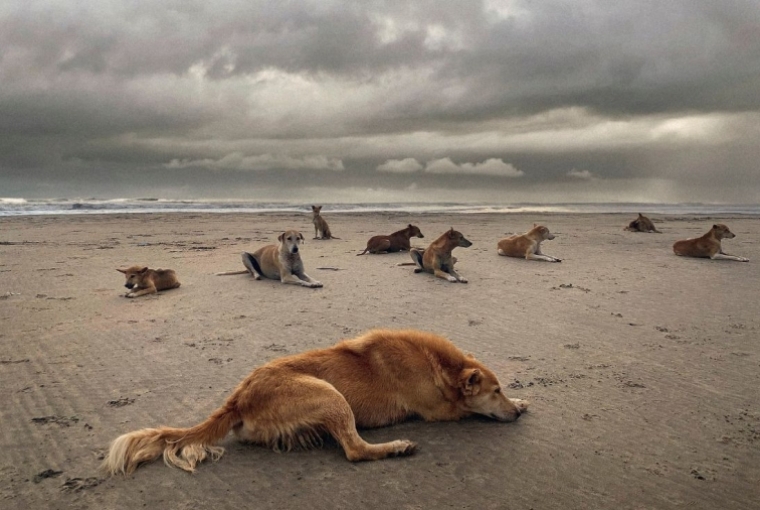
I was unaccustomed to the feeling. I’d been photographing people for forty years and travelling was the only constant I knew. So when the Lockdown was first announced I was bereft of ideas as to how to construct my days and nights. Unable to reconcile with talking to the walls or walking circles inside my house, I coaxed the erstwhile Hotel La Amore at Ashwem beach to open up a sea-facing room for me, which they did but with the caveat that I would have to fend for myself thereafter as their staff had gone, their kitchen wasn’t functioning, everything had shut down.
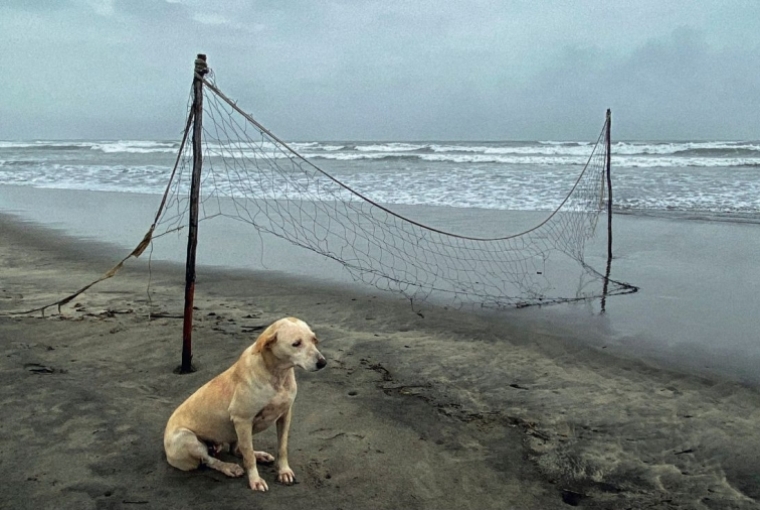
With that room as a base I began walking the beach to stay fit, twenty kilometers a day, those stray dogs following me, hoping perhaps that I was the harbinger of manna from heaven, for on earth they’d been left with nothing – the tourists had fled, the beaches were no longer a moveable feast of leftovers. It broke my heart to see them emaciated, eyes large and dead with hunger. In all our own scrambling for food those days, some hoarding away more than they needed, those homeless, helpless dogs had been completely forgotten.
As I recall, when I began shooting these pictures, more than turning a pack of neglected dogs into a photographer’s subject, I was trying to form a frame around my own vulnerability, my disparate thoughts, my inability to articulate those thoughts even to myself. Thus these images are the quietest, introspective work I’ve done. As conceptualization goes, I have always believed that good design is essentially about subtraction and a certain graphic minimalism has been a leitmotif of my craft. The quiet desolation and bleakness of those times against the magnificence of the Goan monsoon became my poetry of choice.
But beyond choosing the time of day, the quality of light, nothing was ever in my control. Unlike my human subjects i couldn’t manipulate or coax the dogs to do my bidding, couldn’t predict the moods of the monsoon or the sea’s erratic behaviour. The relentless rain took a toll on my cameras which were overwhelmed by the moisture and became inoperable for days. But those magical clouds, that endless expanse of water, the shimmering dance of light created a vast ethereal studio where every morning the sea cast a fresh set of surrealistic props at high tide.
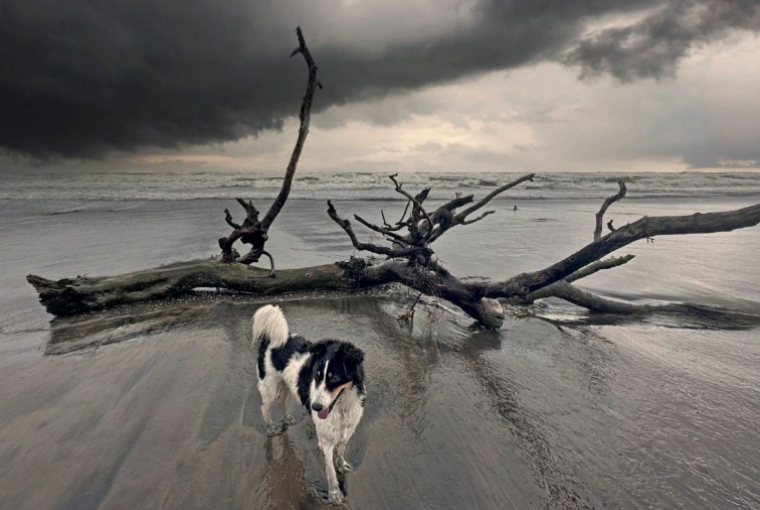
It was three years after I had taken these images that I looked at them and found to my surprise that they told a story bigger than I had intended. In some ways it’s a deeply political story, and I share these images with the thought that that story might resonate with others who, in one way or another, may have been where I was.
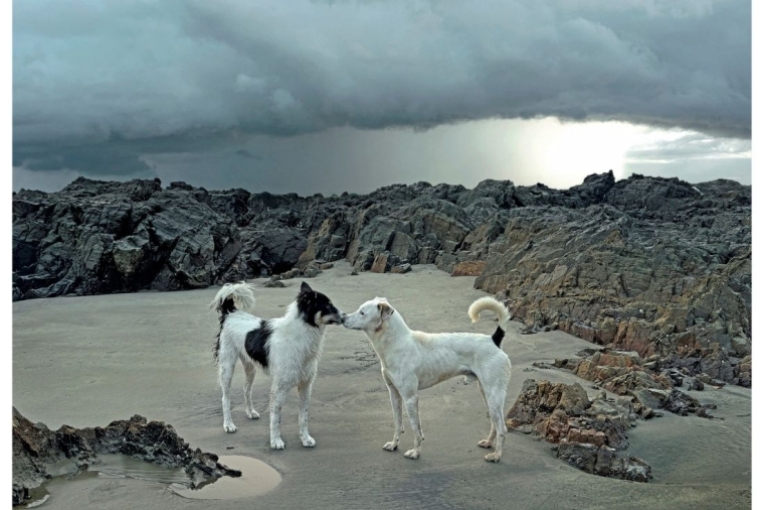
Rohit Chawla launched Rain Dogs alongside the celebrated journalist Tina Brown at the Jaipur Literature Festival last weekend.
Words Rohit Chawla
Date 03.02.2025